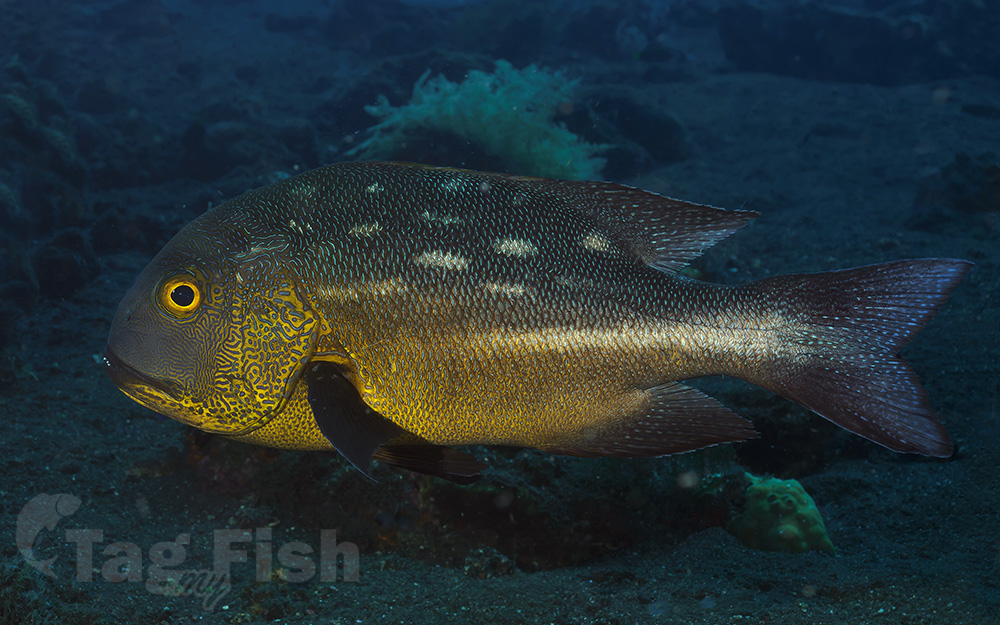Midnight snapper
(Macolor macularis)

Classification
General data
The black and white snapper has a relatively deep body. It has a convex dorsal profile of the head and a large mouth which extends back to the front of the eye. Each jaw has an outer band of conical teeth which are enlarged into canine-like teeth at the front, on the inside of these are bands of bristle-like teeth, at the side in the upper jaw and set anteriorly in the lower jaw. The vomerine teeth are arranged a rough chevron with no a median posterior extension. There is a deep incision on the lower margin of the preoperculum.
The dorsal fin contains 10 spines and 13-15 soft rays while the anal fin has 3 spines and 10-11 soft rays. The rear tips of both the dorsal and anal fins are clearly pointed. The pectoral fins are long, extending as far as the anus, containing 17-18 fin rays and the caudal fin is emarginate.
The black and white snapper can reach a maximum total length of 75 cm (30 in), though most do not exceed 35 cm (14 in).
Its fins and eyes are black and its body varies in color from light grey to black depending on age.
Juveniles are typically striped, changing in complete black when adult.
The black and white snapper has a wide Indo-Pacific range. It occurs along the eastern coastline of Africa from the Red Sea south as far as South Africa, the Seychelles, islands in the Mozambique Channel, Madagascar and western Mascarenes, east to the Maldives, Laccadives, the Chagos Islands, Cocos (Keeling) Islands and Christmas Island and Sri Lanka.
In the Pacific it occurs from western Malaysia, western Indonesia and the Andaman Sea east to the Marshall Islands, Samoa and Tonga south to Australia north to central Japan. It has also recorded from Niue and the Cook Islands. It is










